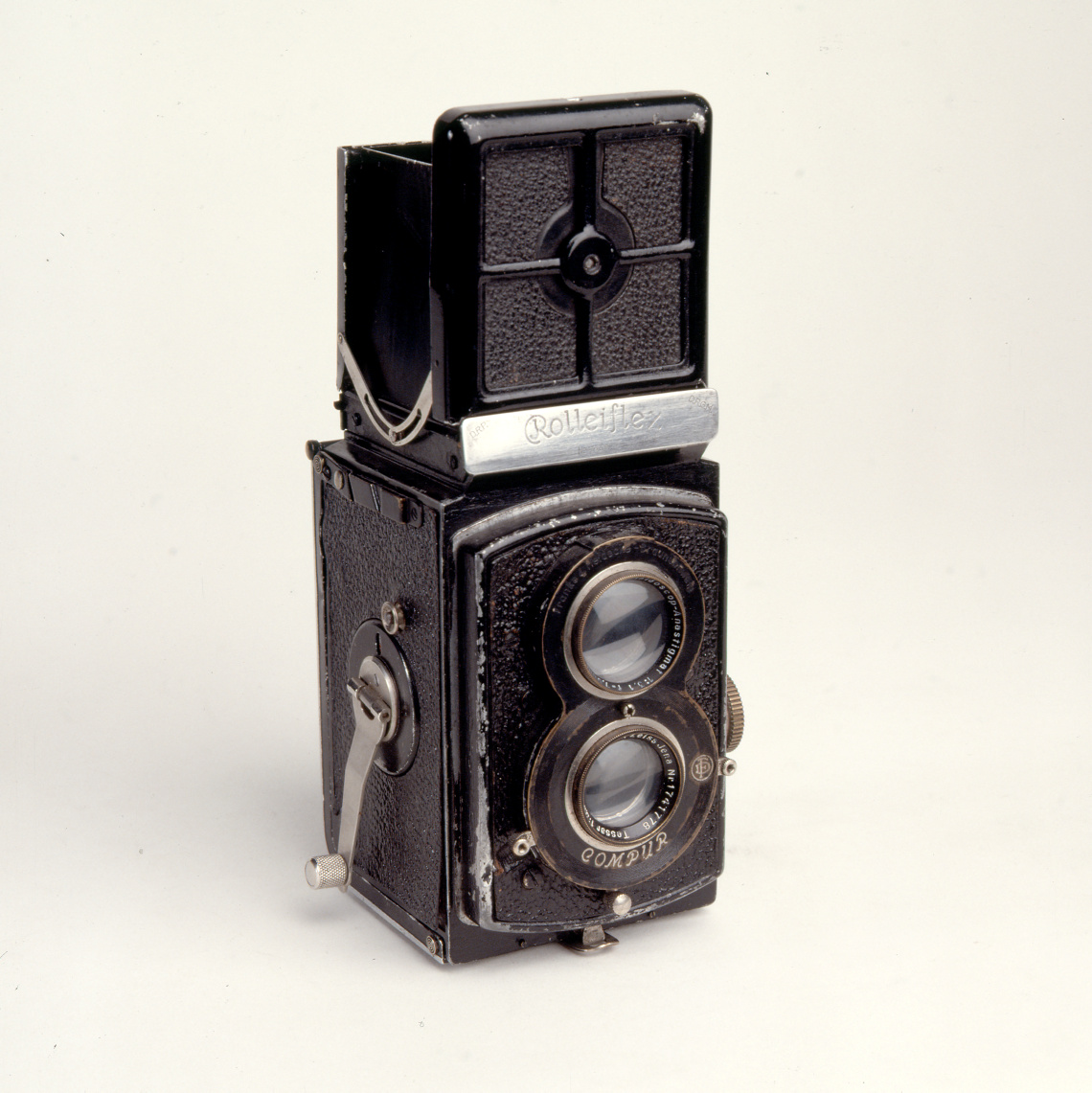Week 28 - 2019

Rolleiflex Tessar (photo: Andreas Harvik) Belongs to the Preus Museum's collection.
Tvillinglinser
Rolleiflex is a camera that conjures warm feelings within many of us. It was sensational when it was introduced for the first time in 1929. Lee Miller, whose work is exhibited in the “War and Fashion” exhibition at Preus museum, got her first Rolleiflex camera in 1939. The camera pictured here is a Rolleiflex Tessar exhibited together with Lees images.
Rolleiflex is a TLR camera, where TLR is an abbreviation of Twin Lens Reflex - «twin» because there are two lenses; a “two-eyed” Lens Reflex Camera, as we say in Norway. The lenses have the same focal length; one for viewing and focusing (the viewfinder), and the other for taking the photo. “Reflex” refers to the mirror used behind the viewfinder lens in order to focus. The big commercial successes amongst the TLR cameras was the ones using 120 film that flourished from the 1930s to the 1950s.
One difference between Lens Reflex and TLR is that the photographer views the motif from eyeheight with the Lens Reflex, whilst with the TLR the motif is viewed from the height of your chest - as the photographer has to look downwards in order to look into the viewfinder. Another difference is that the TLR format is bigger (6 x 6 cm, about three times bigger than the Lens Reflex Camera with its 35mm wide negatives) as well as squared. If the photographer wanted a tall image format or a landscape format, she didn't need to rotate the camera, but shoot it squared, and crop it to size afterwards.
Another difference is that the TLR’s are equipped with a fixed mirror, and not one that claps down at the moment of exposure, like those in the lens reflex cameras. This means fewer vibrations; an advantage during handheld longer exposures, including the fact that the viewfinder doesn't turn black during the exposure. The TLR camera had the best objective lens available, and it was known to be user friendly, lightweight as well as robust. A must-have for any press photographer!




